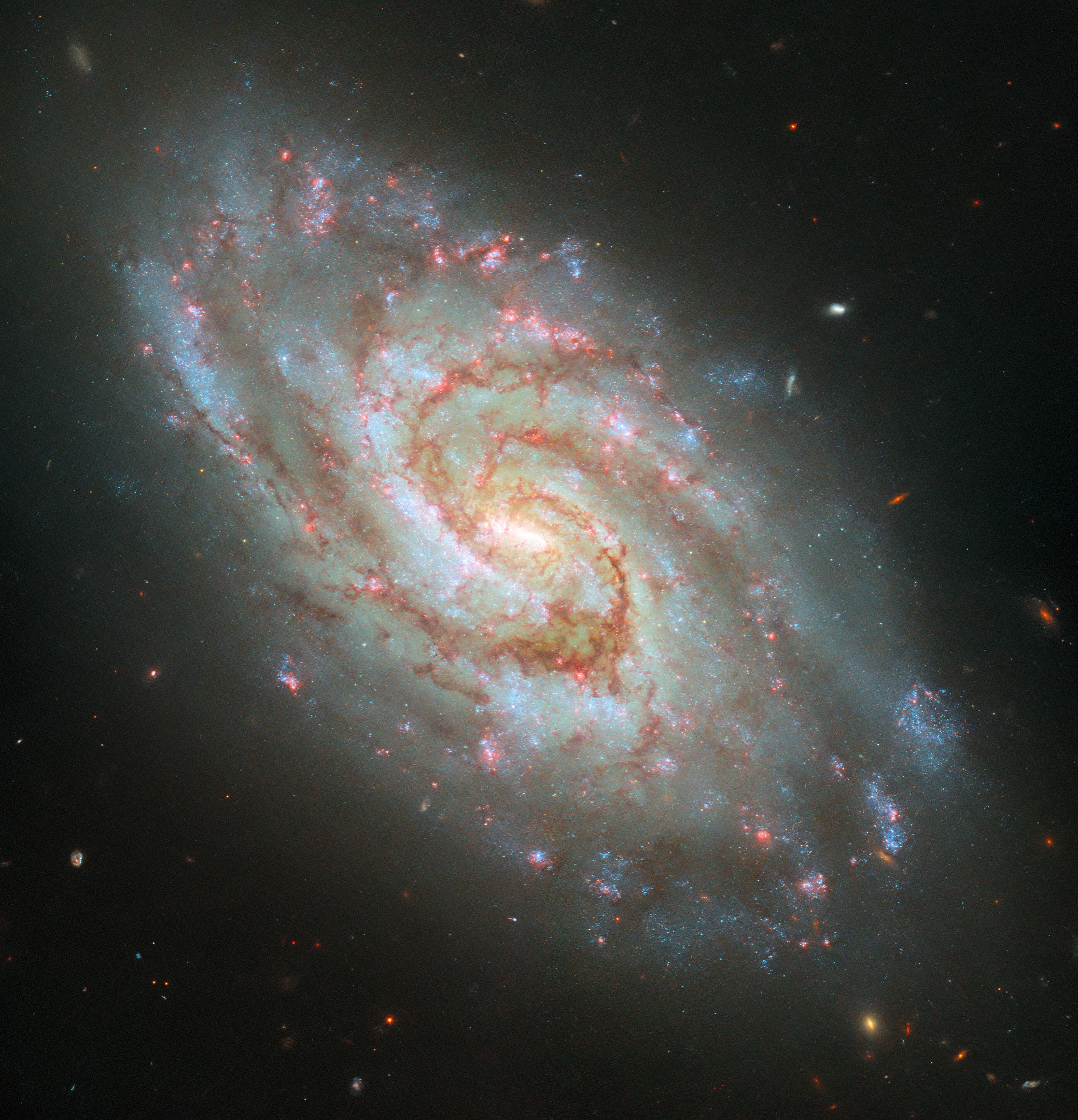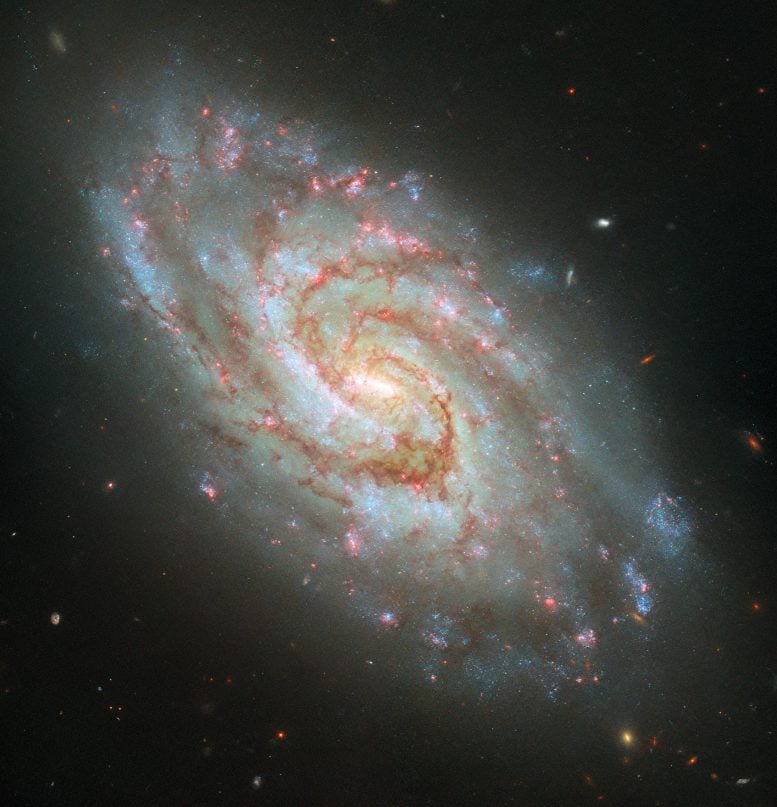

The spiral galaxy IC 1954 is revealed in stunning detail by the Hubble Space Telescope, showing a bright bar at its core, intricate spiral arms, and nebulae glowing in H-alpha light.
The star of this Picture of the Week from the Hubble Space Telescope is the spiral galaxy IC 1954, located about 45 million light-years from Earth in the constellation Horologium. It sports a glowing bar in its core, two main majestically winding spiral arms, and clouds of dark dust across it.
An image of this galaxy was previously released in 2021; this week’s image is entirely new and now includes H-alpha data. The improved coverage of star-forming nebulae, which are prominent emitters of the red H-alpha light, can be seen in the numerous glowing, pink spots across the disc of the galaxy.
Interestingly, some astronomers posit that the galaxy’s ‘bar’ is actually an energetic star-forming region that just happens to lie over the galactic center.
A Multispectral Survey
The new data featured in this image come from a program to extend the cooperation between multiple observatories: Hubble, the infrared James Webb Space Telescope, and the Atacama Large Millimeter/submillimeter Array, a ground-based radio telescope.
By surveying IC 1954 and over fifty other nearby galaxies in radio, infrared, optical, and ultraviolet light, astronomers aim to fully trace and reconstruct the path matter takes through stars and the interstellar gas and dust in each galaxy.
Hubble’s observing capabilities form an important part of this survey: it can capture younger stars and star clusters when they are brightest at ultraviolet and optical wavelengths, and its H-alpha filter effectively tracks emission from nebulae. The resulting dataset will form a treasure trove of research on the evolution of stars in galaxies, which Webb will build upon as it continues its science operations into the future.